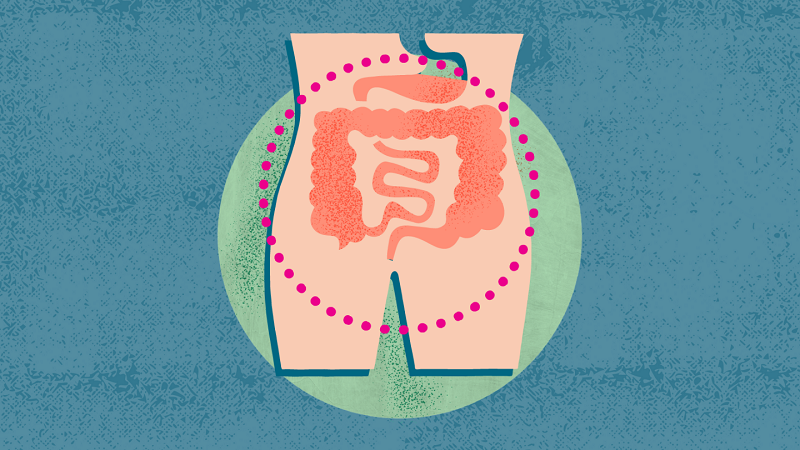Introduction
Ann Bannon, celebrated American author known for her groundbreaking work in lesbian pulp fiction, has faced a significant personal challenge: myalgic encephalomyelitis/chronic fatigue syndrome (ME/CFS). This debilitating condition has profoundly impacted her life and career. Through her journey, Bannon has become a vocal advocate for awareness and understanding of ME/CFS, sharing her experiences and insights to help others navigate this often misunderstood illness.
Ann Bannon’s Journey with ME/CFS
Literary Career and Onset of Illness
Ann Bannon, born Ann Weldy, is best known for her “Beebo Brinker Chronicles,” a series of lesbian pulp fiction novels published in the 1950s and 1960s. These works earned her the title of the “Queen of Lesbian Pulp Fiction.” However, Bannon’s promising literary career was interrupted by the onset of ME/CFS, a chronic illness characterized by extreme fatigue and other severe symptoms. This condition, which developed following a viral infection, forced Bannon to adapt to a new way of life and work.
Diagnosis and Initial Struggles
Diagnosing ME/CFS can be a long and challenging process, often involving the exclusion of other medical conditions. Bannon experienced a period of uncertainty and frustration as she sought answers for her persistent fatigue and other symptoms. Receiving a diagnosis of ME/CFS marked a pivotal moment in her life, prompting her to seek ways to manage her condition while continuing her writing career.
Understanding Myalgic Encephalomyelitis (ME/CFS)
What is ME/CFS?
Myalgic encephalomyelitis (ME), also known as chronic fatigue syndrome (CFS), is a chronic, debilitating illness characterized by severe fatigue that does not improve with rest. It often follows a viral infection and can significantly impair daily functioning and quality of life.
Common Symptoms
- Severe Fatigue: Persistent exhaustion that worsens with physical or mental activity and does not improve with rest.
- Post-Exertional Malaise (PEM): A significant worsening of symptoms following physical or mental exertion.
- Sleep Problems: Unrefreshing sleep, insomnia, or other sleep disturbances.
- Cognitive Difficulties: Issues with concentration, memory, and cognitive processing, often referred to as “brain fog.”
- Muscle and Joint Pain: Unexplained muscle pain and joint pain without swelling or redness.
- Headaches: New or worsening headaches.
- Sore Throat and Swollen Lymph Nodes: Recurring sore throat and tender lymph nodes.
Ann Bannon’s Battle with Symptoms
Daily Life Challenges
The transition from a thriving author to living with ME/CFS was profoundly challenging for Bannon. Tasks that were once routine became insurmountable obstacles. The severe fatigue and other symptoms significantly impacted her ability to engage in daily activities and maintain her writing schedule.
Mental and Emotional Impact
The chronic nature of ME/CFS also took a toll on Bannon’s mental and emotional well-being. The drastic change in her life, coupled with the invisible nature of the illness, led to feelings of frustration, isolation, and depression. The lack of public understanding and support for ME/CFS added to the emotional burden she carried.
Treatment and Management Strategies
Medical Treatments
- Medications: There is no specific cure for ME/CFS, but various medications can help manage symptoms. These may include pain relievers, sleep aids, and antidepressants to improve sleep and mood.
- Cognitive Behavioral Therapy (CBT): CBT can help patients develop coping strategies to manage the psychological impact of ME/CFS.
Lifestyle Modifications
- Pacing: Pacing involves balancing periods of activity with rest to avoid triggering post-exertional malaise. This method helps manage energy levels and prevent symptom flare-ups.
- Healthy Diet: Maintaining a balanced diet rich in essential nutrients can support overall health and energy levels.
- Gentle Exercise: Low-impact exercises, such as stretching and yoga, can help maintain physical health without exacerbating symptoms. Exercise routines should be tailored to individual energy levels and capabilities.
- Sleep Hygiene: Establishing a regular sleep schedule and creating a restful sleep environment can help improve sleep quality.
Alternative Therapies
- Acupuncture: Some patients find relief from symptoms through acupuncture, which may help improve energy levels and reduce pain.
- Massage Therapy: Regular massages can help alleviate muscle tension and promote relaxation.
- Mindfulness and Meditation: Practices such as mindfulness meditation can help manage stress and improve mental clarity.
Ann Bannon’s Advocacy and Awareness Efforts
Raising Public Awareness
Ann Bannon has used her platform to raise awareness about ME/CFS. By sharing her personal experiences and the challenges she faces, she has helped to shed light on the condition and foster greater understanding and empathy among the public.
Supporting Research and Education
Bannon’s advocacy extends to supporting research and education initiatives aimed at better understanding ME/CFS. She emphasizes the need for more scientific research to uncover the underlying causes of the condition and develop effective treatments.
Living with ME/CFS: Insights from Ann Bannon
Adapting to Limitations
Bannon has had to make significant adjustments to her lifestyle to manage her symptoms effectively. This includes prioritizing rest, avoiding activities that trigger symptoms, and finding a balance between personal commitments and health needs.
Maintaining a Positive Outlook
Despite the challenges, Bannon maintains a positive outlook. Her resilience and determination to live a fulfilling life, despite ME/CFS, serve as an inspiration to others facing similar battles. She continues to advocate for better understanding and support for those living with chronic illnesses.
FAQs
What led to Ann Bannon developing ME/CFS?
The exact cause of ME/CFS is unknown. Bannon’s condition developed gradually, with persistent fatigue and other symptoms significantly impacting her daily life and writing career.
How does Ann Bannon manage her ME/CFS symptoms?
Bannon manages her symptoms through a combination of medical treatments, lifestyle changes, and alternative therapies. This includes pacing, maintaining a healthy diet, incorporating gentle exercise, and practicing mindfulness.
What are the main symptoms of ME/CFS?
The main symptoms of ME/CFS include severe fatigue, post-exertional malaise, sleep problems, cognitive difficulties, muscle and joint pain, headaches, and recurring sore throat and tender lymph nodes.
Can ME/CFS be cured?
There is currently no cure for ME/CFS, but symptoms can be managed effectively through a combination of treatments and lifestyle modifications. Research continues to seek better understanding and effective treatments for the condition.
How has Ann Bannon’s openness about ME/CFS impacted public awareness?
Bannon’s openness has significantly raised public awareness about ME/CFS, helping to foster greater understanding and empathy for those living with this condition.
What lifestyle changes has Ann Bannon made to manage her ME/CFS?
Bannon has adapted her lifestyle by prioritizing rest, avoiding activities that trigger symptoms, maintaining a healthy diet, incorporating regular, gentle exercise, and practicing mindfulness and meditation.
Conclusion
Ann Bannon’s journey with myalgic encephalomyelitis/chronic fatigue syndrome highlights her resilience and determination to overcome the challenges posed by this debilitating condition. Through her advocacy and personal experiences, she has raised much-needed awareness about ME/CFS, inspiring others to seek help and manage their symptoms effectively. By adopting a comprehensive approach that includes medical treatments, lifestyle changes, and alternative therapies, Bannon continues to lead a fulfilling life, demonstrating that with the right strategies, it is possible to live well with ME/CFS.

Click Here to Visit the Store and find Much More….
For More Information Related to Fibromyalgia Visit below sites:
References:
Fibromyalgia Contact Us Directly
Click here to Contact us Directly on Inbox
Official Fibromyalgia Blogs
Click here to Get the latest Chronic illness Updates
Fibromyalgia Stores






